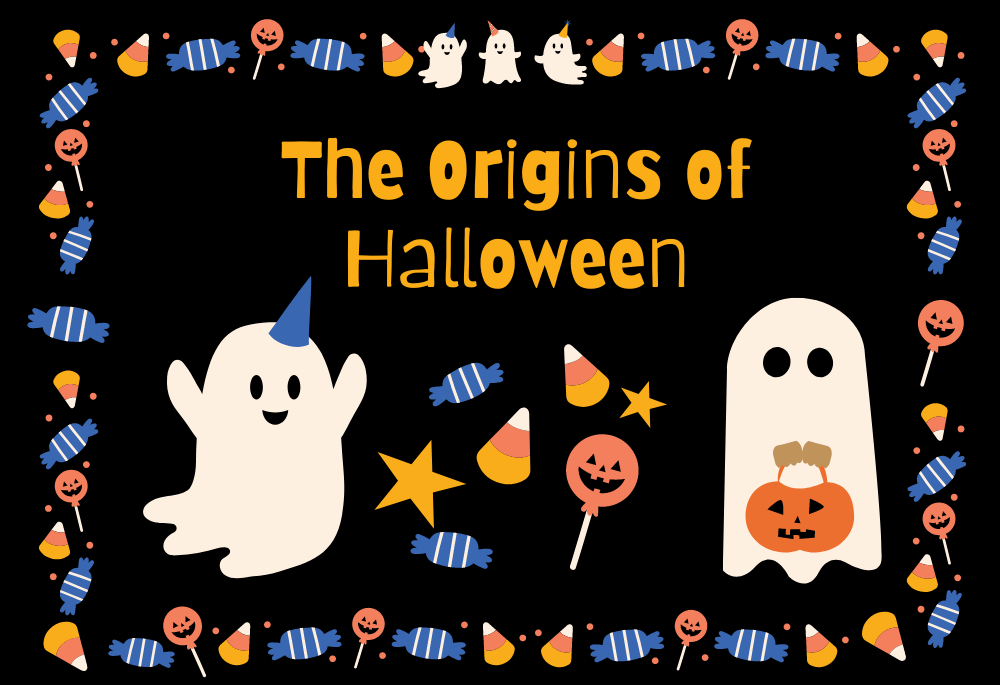With Halloween just around the corner, your kids might be wondering: Where did this spooky holiday come from? Why do we celebrate it? When did it start?
Tracing the origins of Halloween takes us back thousands of years ago in Europe, all the way to the ancient Celts who lived in the British Isles and Northern France. There they celebrated a festival called Samhain (pronounced SAH-win) on October 31st. They believed on that day the barrier between the dead and the living became weak enough that the dead could sometimes return to the realm of the living. Now that’s supernatural!
The day also symbolized the end of summer and the time to harvest before the cold winter weather hit. But did they wear costumes? Well, during the celebration, the Celts would make sacrifices to appease their deities. People would dress up in animal skins and heads to prevent the dead from kidnapping them.
When the Roman Empire conquered most of Europe, this included the Celtic region of Northern France and the British Isles. The Romans would slowly integrate the festivals of subjugated regions into their own holidays. Samhain was combined with the Roman day of Feralia which commemorated the dead. When Christianity became the main religion of the Roman Empire, the Catholic church in the British Isles would celebrate a festival called All Souls’ Day. Some argue it served to replace Samhain with a Catholic version.
Churches across the British Isles and Bavaria celebrated a festival dedicated to all saints and Christian martyrs in the 8th and 9th centuries. This happened on November 1st and the local tradition soon spread throughout western Europe with approval from the Pope at the time, Gregory IV.
All Saints’ Day had another name, All Hallows’ Day. The day before, October 31st, became known as All Hallows’ Eve or All Saints’ Eve. It was inspired by Samhain regarding the festivities and costumes. The day after, people would celebrate the religious holiday of All Saints’ Day, and the day after that would be All Souls’ Day, the day to honour the dead. All Hallows’ Eve later became known as Halloween.
The festival was brought to the Americas by Irish immigrants in the 19th century, gaining popularity in the United States especially. From there, it spread throughout the world and varied country by country. And to think that without the Irish immigrants bringing the tradition over, Halloween might not have existed.
And what about trick or treating?
The whole “trick or treat” idea came from the Middle Ages. People, mostly the poor, dressed up and went door to door begging for food or money in exchange for prayers to the dead family members. The family would give out soul cakes, thus the name of the practice became souling.
Children in Scotland and Ireland, meanwhile, would wear costumes and go door to door. This was called guising; instead of praying for the souls of the family, children would preform: telling a joke, reciting a poem, or singing a song.
When European immigrates moved to the United States in the 1900s, they revived souling practices. All these traditions from around the world melded together to form the Halloween holiday we know and love today.
Have you heard of the Day of the Dead in Mexico or Guy Fawkes Day in England? What other similar practices or holidays do you know?
And last but not least, which Halloween candy is your favourite?

